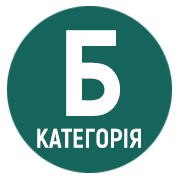LINGUISTIC MEANS OF REPRESENTING GENDER IDENTITY IN ONLINE DISCOURSE
DOI:
https://doi.org/10.32782/2412-933X/2025-XXIII-3Keywords:
gender identity, online discourse, youth communication, linguistic tools, gender representation, digital platforms, stereotypesAbstract
The article examines the linguistic tools utilized by youth to construct and represent gender identity within the framework of online discourse, focusing on Facebook comments under Billy Porter’s posts. It highlights the dynamic nature of digital communication and its role in reflecting and reshaping societal norms. By employing interdisciplinary approaches from sociolinguistics, psychology, cultural studies, and critical discourse analysis, the study investigates the interactive and multimodal characteristics of networked discourse. The research identifies distinct linguistic patterns in youth communication. Women often employ emotionally charged and polite expressions, reflecting empathy and social acceptance, while men favor neutral or direct phrasing, reinforcing traditional perceptions of masculinity. Additionally, the use of innovative vocabulary, such as genderspecific terms (“cisgender,” “non-binary”) and hashtags (#HeForShe, #LoveIsLove), demonstrates a shift towards inclusivity and precision in self-identification. The study emphasizes the transformative potential of social media platforms in challenging gender stereotypes and promoting equality. Through the strategic use of metaphors, hashtags, and emerging linguistic trends, young people navigate and redefine gender roles within digital environments. Moreover, the research underscores the significance of linguistic tools in fostering social interaction, self-expression, and group identity. This article contributes to a deeper understanding of the interplay between language and gender in online youth communication, providing a foundation for future explorations into how verbal and visual elements shape digital representations of gender identity.
References
Вжещ Я.Л. Інтернет-дискурс: проблема визначення поняття, особливості структури. Вісник Луганського національного університету імені Тараса Шевченка. 2012. № 14. С. 15–19.
Говорун Т.В., Кікінежді О.М. Конструювання гендеру в когнітивній парадигмі. Наукові записки Національного університету «Острозька академія». Серія «Психологія і педагогіка». Тематичний випуск «Актуальні проблеми когнітивної психології». 2010. Вип. 14. С. 55–65.
Дзюбіна О.І. Емоційно-оцінний компонент в тематичних групах неологізмів соціальних мереж Twitter та Facebook. Науковий вісник Східноєвропейського національного університету ім. Лесі Українки. Серія «Філологічні науки (мовознавство)». 2015. Вип. 4 (305). С. 255–257.
Каптюрова В.В. Сленг соціальних мереж та мікроблогів. Лінгвістика ХХІ століття: нові дослідження і перспективи. Київ : Логос, 2012. С. 134–140.
Швачко С.О. Соціолінгвістичні аспекти гендерної проблеми. Вісник Харківського національного університету ім. В.Н. Каразіна. 2020. № 609. С. 91–93.






